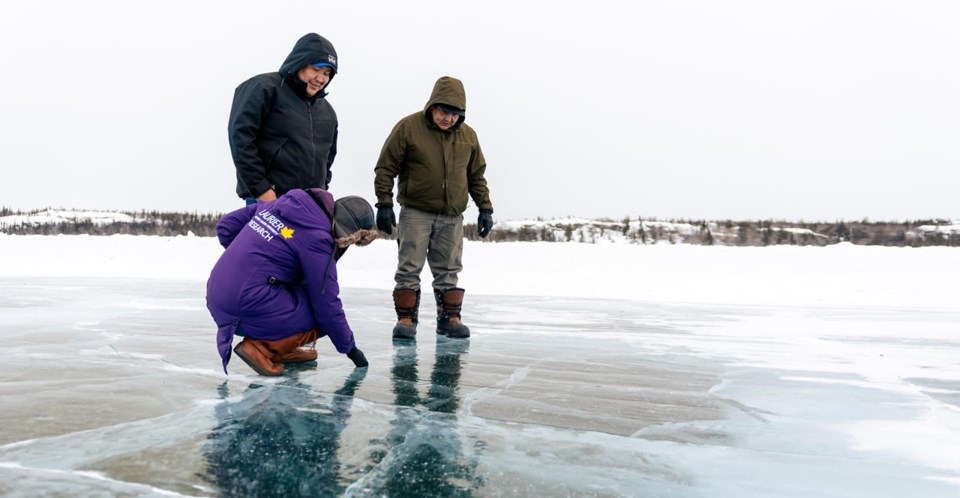LUTSEL K'E, NORTHWEST TERRITORIES — Iris Catholique says over the past two decades, she's noticed the waters of Great Slave Lake surrounding Lutsel K'e, N.W.T., taking longer to freeze in the winter.
"In the past, the lake used to freeze by November, December and by early December, we're able to travel through traditional trails and different small lakes between here and our traditional hunting grounds," she said. "Now we can't do that. We have to wait until after the lakes start to freeze in January."
The ice is not as thick in some areas at it used to be, Catholique added, and people from the community also have to travel farther to find caribou and muskox.
Catholique is manager of Thaidene Nene, meaning "the land of the ancestors" in Denesuline Yati, an Indigenous protected area larger than 26,000 square kilometres on the East Arm of Great Slave Lake near Lutsel K'e.
The community, home to more than 300 people, is only accessible by plane or travelling on the lake by boat in the summer and over the ice in the winter.
"It's our highway," Catholique said of the ice. "It's pretty much our lifeline to our traditional harvesting areas."
Climate change is making ice conditions on the lake, which is roughly the same size as Belgium and the deepest lake in North America, less predictable. In May 2019, three people travelling by snowmobile from Dettah to Lustel K'e were believed to have gone through the ice.
This winter, the Ni Hat'Ni Dene, members of the Lustel K'e Dene First Nation who are guardians of Thaidene Nene, partnered with researchers from Wilfrid Laurier University in Waterloo, Ont., to monitor the ice using traditional knowledge and modern technology.
They installed snow and ice mass balance apparatuses, or SIMBAs, at two locations identified by the community where the ice is thinner and there is more overflow. The sensors measure ice thickness, snow depth, and air and water temperatures every 15 minutes, providing community members real-time data to help inform decisions on ice travel.
"We don't want to lose any more of our folks," Catholique said, noting elders in the community have called for ice monitoring.
Homa Kheyrollah Pour, an assistant professor in the Department of Geography and Environmental Studies at Wilfrid Laurier, said the research aims to understand how lakes in the North are responding to climate change to inform decision-making.
The research is part of the N.W.T. government's Cumulative Impact Monitoring Program.
Kheyrollah Pour noted the North is warming three times faster than the global average.
Last winter, she and her team installed SIMBAs on Ryan Lake and Landing Lake north of Yellowknife. This winter she said they installed some on those lakes, as well as the ice road on Vee Lake outside Yellowknife, the ice roads to Dettah and Deline and two locations outside Lutsel K'e.
"We are trying to understand the community needs," said Kheyrollah Pour, who is also Canada Research Chair in Remote Sensing of Environment Change.
"Our team is really dedicated basically to move from a traditional science format to more co-creation knowledge with the community type of research."
She said that means training and capacity building within communities so guardians can take the lead in using smart technology as part of their future monitoring efforts.
"Being in the community, meeting elders, they are very concerned that youth are not going as much as previous generations on the land, they don't capture as much traditional knowledge as they used to," she said.
"Maybe bringing in this smart monitoring system and technologies can inspire them."
This report by The Canadian Press was first published April 30, 2023.
— By Emily Blake in Yellowknife
This story was produced with the financial assistance of the Meta and Canadian Press News Fellowship.
The Canadian Press



